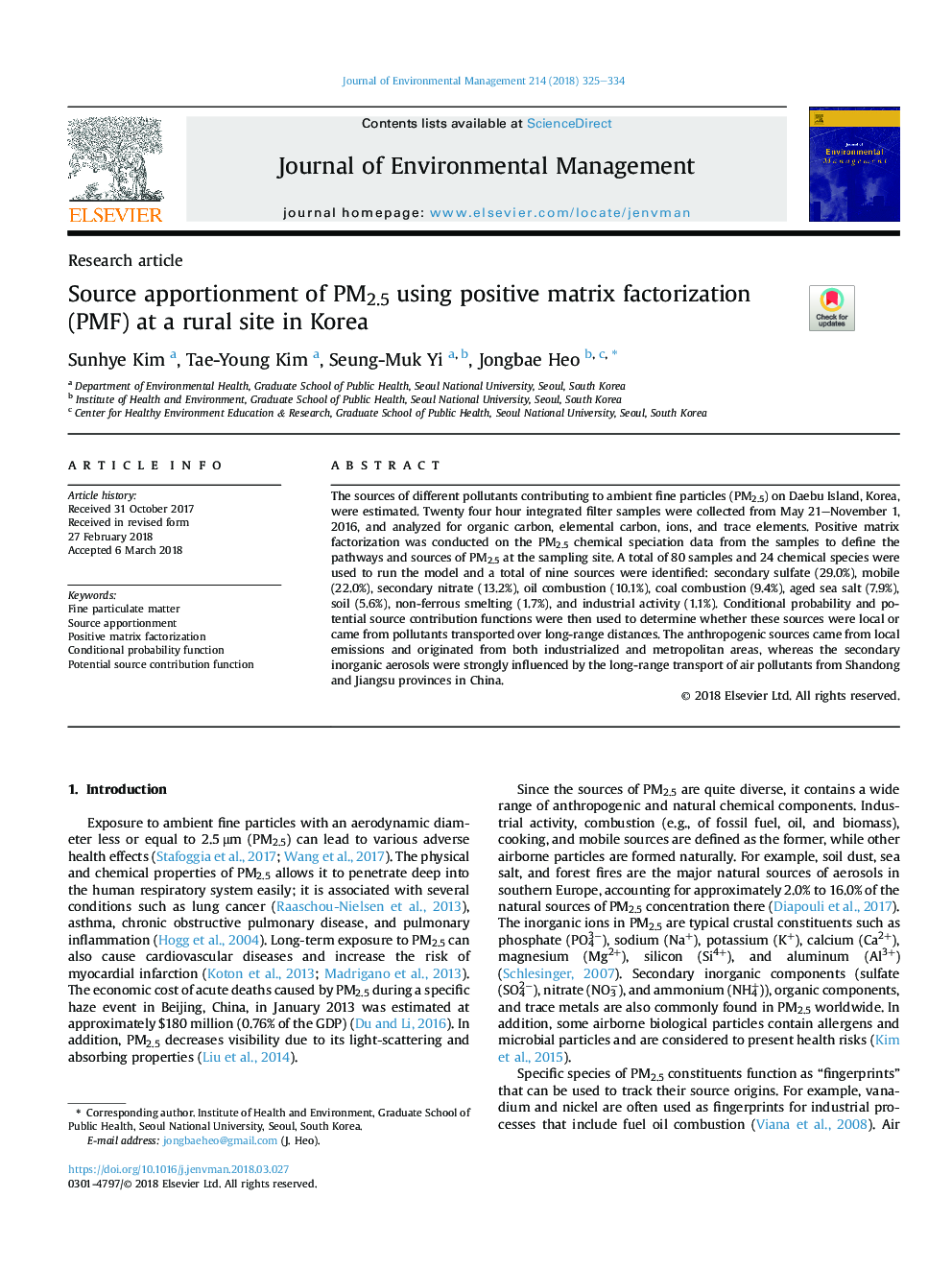| Article ID | Journal | Published Year | Pages | File Type |
|---|---|---|---|---|
| 7477809 | Journal of Environmental Management | 2018 | 10 Pages |
Abstract
The sources of different pollutants contributing to ambient fine particles (PM2.5) on Daebu Island, Korea, were estimated. Twenty four hour integrated filter samples were collected from May 21-November 1, 2016, and analyzed for organic carbon, elemental carbon, ions, and trace elements. Positive matrix factorization was conducted on the PM2.5 chemical speciation data from the samples to define the pathways and sources of PM2.5 at the sampling site. A total of 80 samples and 24 chemical species were used to run the model and a total of nine sources were identified: secondary sulfate (29.0%), mobile (22.0%), secondary nitrate (13.2%), oil combustion (10.1%), coal combustion (9.4%), aged sea salt (7.9%), soil (5.6%), non-ferrous smelting (1.7%), and industrial activity (1.1%). Conditional probability and potential source contribution functions were then used to determine whether these sources were local or came from pollutants transported over long-range distances. The anthropogenic sources came from local emissions and originated from both industrialized and metropolitan areas, whereas the secondary inorganic aerosols were strongly influenced by the long-range transport of air pollutants from Shandong and Jiangsu provinces in China.
Keywords
Related Topics
Physical Sciences and Engineering
Energy
Renewable Energy, Sustainability and the Environment
Authors
Sunhye Kim, Tae-Young Kim, Seung-Muk Yi, Jongbae Heo,
